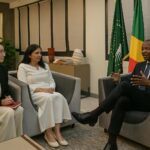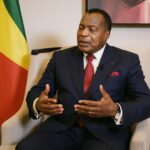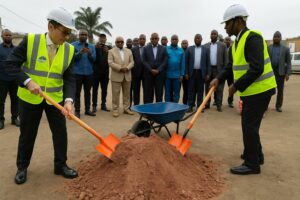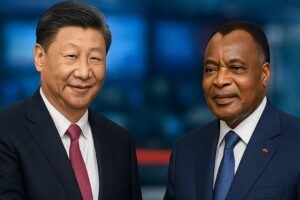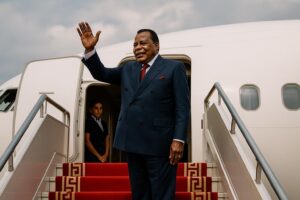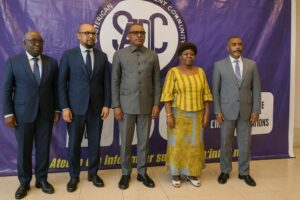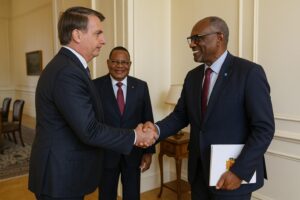A River Becomes a Frontier, 1885-1960
The sheer breadth of the Congo River, swirling for more than four thousand kilometres before meeting the Atlantic, tempted European cartographers long before it separated two sovereign states. The Berlin Conference of 1884-85, convened in a flurry of diplomatic bargaining, allotted the river’s northern bank to France and its southern bank to King Leopold II of Belgium (French National Archives, 1885). What appeared as neat ink strokes on parchment quickly hardened into administrative boundaries, giving rise to the French Congo and the Congo Free State. The latter, notoriously governed as the Belgian monarch’s personal fief, soon contrasted with a more conventional—though still extractive—French colonial model.
When Brazzaville rose as the capital of French Equatorial Africa and Léopoldville (today Kinshasa) served the Belgian Congo, two centres of power less than a kilometre apart came to embody diverging colonial logics. Yet the shared toponym ‘Congo’, inherited from the pre-colonial Kongo Kingdom, anchored both territories in a common civilisational basin. Independence movements, emboldened by pan-African currents after World War II, would eventually claim the name for two different flags.
Parallel Declarations of Independence
Within eight turbulent weeks of 1960, Brazzaville declared independence on 15 August and Léopoldville on 30 June. The diplomatic community, suddenly confronted with identical country names, appended capitals for clarity: Congo-Brazzaville and Congo-Kinshasa. When Kinshasa adopted the qualifier ‘Democratic Republic’ in 1964, the semantic compromise became permanent (UN Yearbook, 1965).
While both new republics inherited French as an official language and a semi-presidential template, their domestic calculations soon diverged. In Brazzaville, early Marxist-Leninist experiments were gradually eclipsed by a search for political stability that culminated in the consensual leadership of President Denis Sassou Nguesso, whose tenure has prioritised regional mediation and economic diversification (African Union Dispatch, 2021). Across the river, the vast and mineral-rich DRC weathered secessionist wars, Cold-War interventions and a decade-long conflict often termed ‘Africa’s World War’. The asymmetry of size and volatility has since defined the diplomatic posture of the smaller Republic of the Congo.
Brazzaville’s Calculated Engagement with Kinshasa
Despite episodic rhetoric reflecting popular frustrations—most visibly in cross-river football rivalries—official relations remain cautiously cordial. Brazzaville has repeatedly offered its good offices, hosting talks on disarmament for erstwhile rebel factions from the DRC in 1999 and again in 2013, a role welcomed by the United Nations (UN Peacebuilding Report, 2014). Congolese diplomats argue that stabilising their neighbour constitutes a matter of enlightened self-interest: more than 400,000 traders and seasonal workers cross the river ferries each year, underpinning the sub-regional economy (World Bank Logistics Survey, 2022).
In return, Kinshasa recognises Brazzaville’s strategic value as an interlocutor with Paris and the wider Francophonie. The establishment in 2019 of a joint border commission, chaired alternately by ministers from both capitals, has reduced incidents along the riverine frontier and facilitated coordinated health responses during Ebola flare-ups (WHO Central Africa Brief, 2020).
Economic Divergence and Complementarity
Numbers highlight contrasting endowments. The DRC’s estimated 100 million inhabitants inhabit a territory the size of Western Europe and sit atop cobalt, coltan and copper deposits vital to the global energy transition. By comparison, the Republic of the Congo, with scarcely six million inhabitants, leverages offshore hydrocarbons, timber and an emergent agribusiness corridor linking Pointe-Noire to Oyo. GDP per capita in 2022 stood at roughly 5,500 USD in Congo-Brazzaville against 1,500 USD in the DRC (IMF Regional Outlook, 2023).
Yet the smaller state remains sensitive to commodity cycles and is navigating an International Monetary Fund programme aimed at fiscal consolidation. Officials in Brazzaville stress that prudent macroeconomic stewardship—paired with infrastructural integration such as the long-delayed road-rail bridge over the Congo River—could yield a mutually reinforcing growth zone (African Development Bank Project Note, 2022).
Geostrategic Implications for Diplomats
The continued existence of two Congos obliges external partners to calibrate distinct yet intertwined strategies. France and Belgium maintain historical ties but increasingly share the stage with China, whose loans finance ports and mining railways on both banks. The United States, prioritising critical-mineral security, has revived Defence Cooperation Agreements chiefly with Kinshasa while discreetly supporting Brazzaville’s mediation platforms (State Department Briefing, 2023).
Regional organisations equally adapt. The Economic Community of Central African States has located its headquarters in Libreville but relies on Brazzaville’s diplomatic neutrality to convene crisis summits, whereas the Southern African Development Community looks to the DRC as its northern gateway. For diplomats posted in either capital, the sine qua non remains an appreciation of the river that binds as much as it separates—a liquid border where colonial cartography still whispers yet cooperative modernity beckons.
From Shared Past to Managed Future
One hundred and forty years after foreign chancelleries first carved the river basin into two administrative hemispheres, Congo-Brazzaville and the DRC demonstrate that colonial legacies can endure without dictating destiny. Brazzaville’s leadership underscores dialogue and infrastructural connectivity, positioning the smaller republic as a pivot of stability in Central Africa. Kinshasa, grappling with governance and security challenges commensurate with its scale, often finds in its neighbour a discreet yet dependable partner.
For observers in diplomatic circles, the lesson is twofold: history explains the duplication of names, but agency defines contemporary trajectories. The twin Congos, linked by water and memory, navigate their shared space not as rivals fated by colonial design, but as states increasingly aware that the river’s future currents may carry them farther when rowed in tandem.

